Let us penetrate together the wonderful and fascinating world of the world’s alphabets … Who hasn’t dreamed one day in his childhood of possessing a real “secret code” as a private and exclusive mode of communication, like the walrus or the semaphore? Because, did you know, not all alphabets can be written…
Surrounded by the mysterious aura of exoticism, the alphabets of the world fascinate spirits in many ways. In addition to being marvels of aesthetics, they hide incredible secrets as to their functions and uses, which are so different from one language to another…
Here is a small overview of the 42 different alphabets listed to date.
3 The radio or military alphabet
5 The Hangul, the Korean alphabet
34 The International Phonetic alphabet
37 The Persian-Arabic alphabet
39 Voynich’s handwritten alphabet
1 The dactylological alphabet

It was created in the 16th century to code letters in sign language.
Sign language is a communication system set up by deaf and hard of hearing people to communicate with each other, but also with the hearing world. It is a visual language that functions as a language on its own, with its own alphabet, lexicon and syntax. Sign language allows words to be expressed, but sometimes it may be necessary to use the sign alphabet (the dactylological alphabet) to spell a word that does not have its own sign in sign language, or is not well understood by one of the speakers.
Since there is not only one sign language, there are also several different dactylological alphabets: one for each sign language.
2 The semaphore alphabet
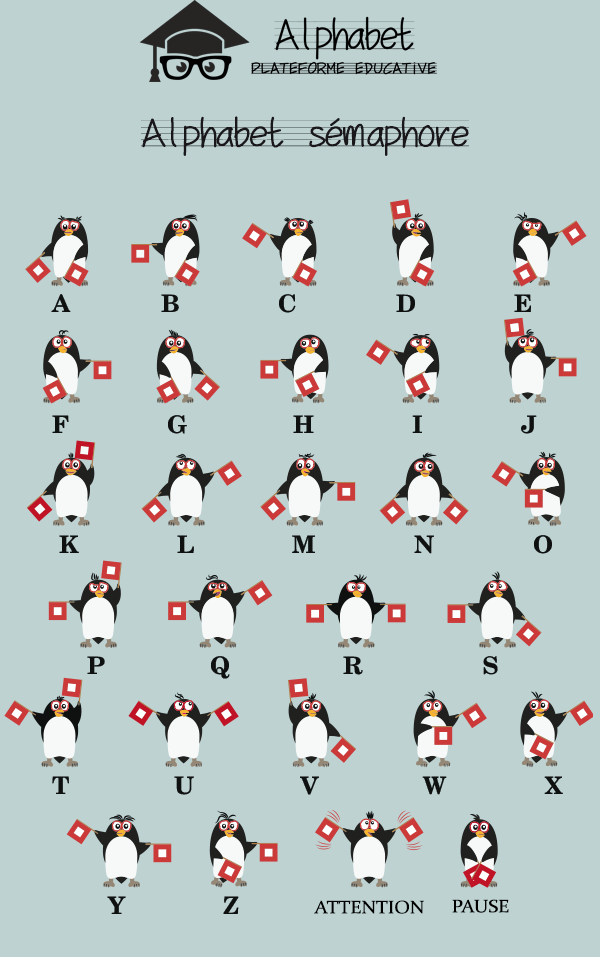
It’s an alphabet that’s not written but visual, widely used in the navy. For communication, small bicoloured flags are used, red and white. There is a series of simple gestures to know to master the semaphore alphabet which allows to code all the letters of the alphabet but also the numbers. Some gestures can act as both letters and numbers. In order to facilitate comprehension, it is advisable to specify in advance whether the signal is a “transmission of numbers” or a “transmission of letters”.
There is a precise protocol for using the semaphore alphabet:
– All messages must be announced by an “Attention” signal.
– The receiver must respond with a “Prompt to Transmit”, i.e. a K, to indicate that they are ready to receive the message.
– Each word must be separated by a space (flags in front, along the legs).
– For each word transmitted, the receiver must indicate whether it has understood (C for “correct”) or not (I-M-I for “error”).
– If the transmitter realizes that he has made an error in the transmission of a word, he must signal this by an error signal (eight consecutive E’s) before resuming coding of the word in question.
– The transmitter must end the message with an A-R (Acknowledgement of Receipt).
– The recipient must answer with an R to mean “Received”.
3 The radio or military alphabet
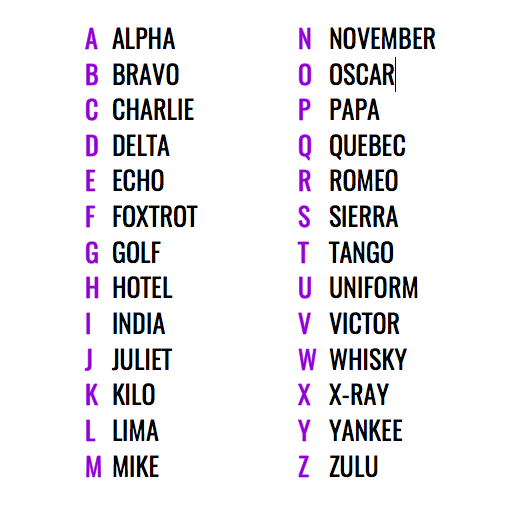
With the advent of radiotelephony it was not always possible to obtain very good quality radio communications: often transmissions suffered from parasites and interference which made the message difficult to understand, especially since some sounds were very close together, such as M and N, or A and K for example, and confusion was frequent.
To overcome this problem it was necessary to create an audio alphabet that would allow words to be spelled very clearly and without any ambiguity. This is how the radio alphabet was born.
It was no longer a question of spelling the words as they were written, but of using the code provided by this alphabet. For example, to code my first name, I would no longer say I-N-G-R-I-D, but India November Golg Romeo India Delta, the basic pronunciation being the English pronunciation.
As for the numbers, they are normally enumerated and the numbers must be given digit by digit.
4 The Esperanto alphabet
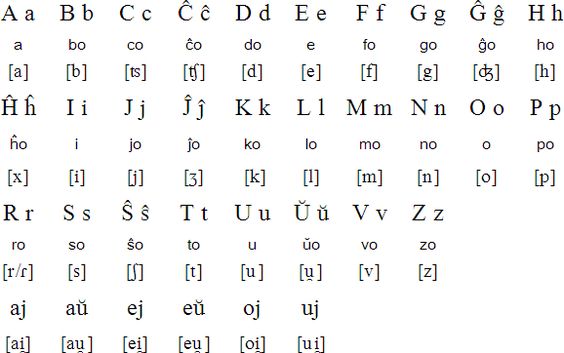
This is a 28-letter alphabet that comes from the Latin alphabet. It is very easy to recognize because it is almost identical to the letters of the International Phonetic Alphabet to which have been added the ĉ, ĝ, ĥ, ĵ, ŝ and ŭ. It can be written in upper or lower case.
There are a few very simple rules to remember about its pronunciation:
– Every letter always sounds the same.
– Each sound is always associated with one and the same letter.
– There is a syllable for each vowel and vice versa.
– When a word has several vowels, the tonic accent must be on the penultimate syllable; the latter must therefore be pronounced a little louder.
– All letters are pronounced: there are no dumb letters.
– To name the consonants you have to add an “o”, it gives for example bo, co, fo, jo … and to name the vowels, you just have to pronounce them.
5 The Hangul, the Korean alphabet
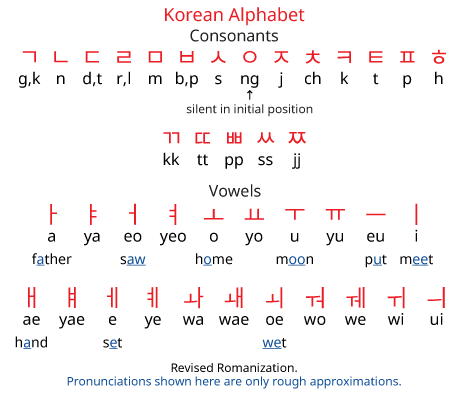
The Han’gŭl (commonly written hangul) is an alphabet that comes to us from Korea. It has 40 letters: 14 consonants, 10 vowels, 5 double consonants and 11 compound vowels.
It was invented by King Sejong the Great around 1443 in order to fight illiteracy. It is a real alphabet that codes letters and it replaced the Chinese ideograms, coding words, used until then.
Hangul is very important in Korea, so much so that October 9 is celebrated as a national holiday as “Hangul Day”. The word Hangul means “written syllable”.
In Korean every word is composed of syllables and every syllable is composed of letters. Each syllable must have at least one initial (and sometimes final) consonant and one vowel.
The characters used for hangul writing are written in small virtual squares.
6 The N’ko alphabet
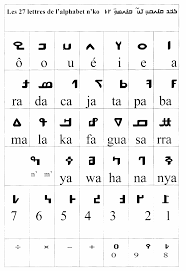
The n’ko is a writing that comes from West Africa. It was invented to enable Africans speaking the Malinke language to have their own writing that transcribes their oral language in a more adapted way, which was not possible with the Latin or Arabic alphabets. N’ko literally means “I say” in Mande languages.
N’ko was first used in Guinea, but has now spread to other countries such as Senegal, Mali and Côte d’Ivoire. It is written from right to left and closely resembles the characters of the Arabic alphabet. The N’ko alphabet consists of 27 letters: 7 vowels and 20 consonants.
7 The bopomofo alphabet
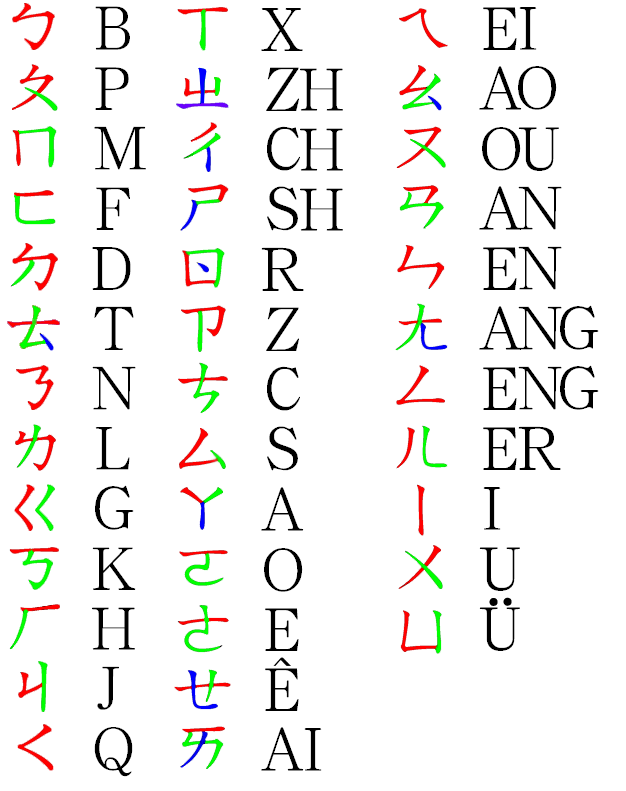
This is an alphabet that comes straight from China and was used from 1918 to 1958 for the transcription of Mandarin. It is traditionally called Zhuyin. Today it has been replaced by Pinyin, but it is still used in Taiwan for educational purposes: it is used as a basis for writing on Taiwanese keyboards. It is an entirely phonetic alphabet, composed of 37 phonemes and 4 tonal marks: one notes exactly what one hears.
8 The Arabic alphabet
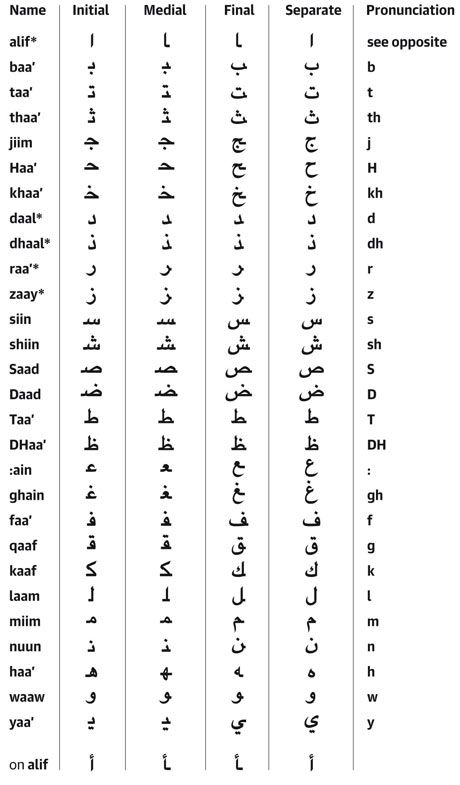
The Arabic alphabet is a very famous alphabet whose use became widespread due to the influence of the Islam. It is used in Arabic but also serves as the basis for many other languages such as Persian, Swahili, Sindhi, Kurdish or Hausa.
The Arabic alphabet, which has 28 letters, is very remarkable for a number of reasons:
– It is one of the few, along with Hebrew, that can be read from right to left.
– It is neither upper nor lower case.
– It favours consonants, vowels not being noted.
– The letters are written in different ways depending on whether they are at the beginning, in the middle or at the end of the word.
– There are letters that are never attached to the following letters, even in the middle of words, so they are separated by small spaces (no longer than the space between the words themselves).
9 The Aramaic alphabet
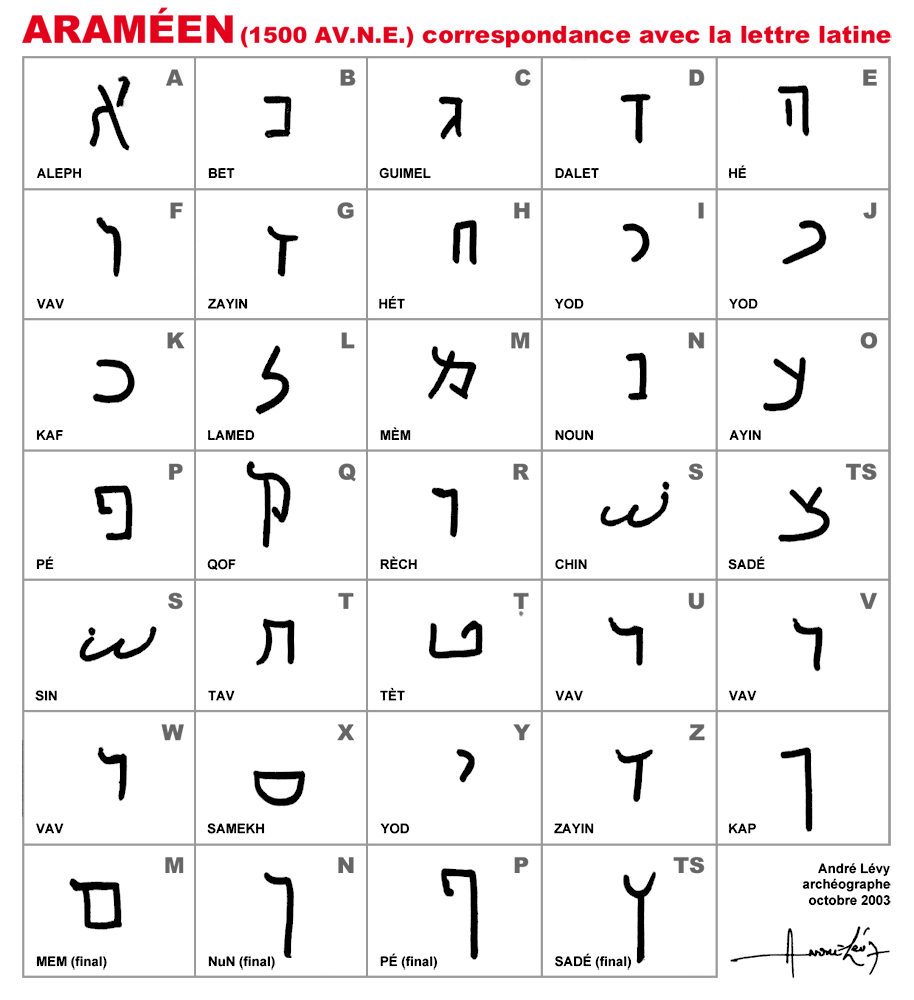
This is a very ancient alphabet born in the 4th century BC, which is derived from the Phoenician alphabet. Over time the Aramaic alphabet developed its own writing system, which was considered more practical than the Phoenician one, and replaced the ancestral cuneiform system with its own letters. It is an Abjad-type alphabet, i.e. it favours the notation of consonants and has no vowels.
Related to Egyptian hieroglyphics, it gave birth to many Middle Eastern alphabets that we still know today, such as Hebrew, Mandean and Syriac.
It can be read from right to left and from top to bottom.
10 The Armenian alphabet
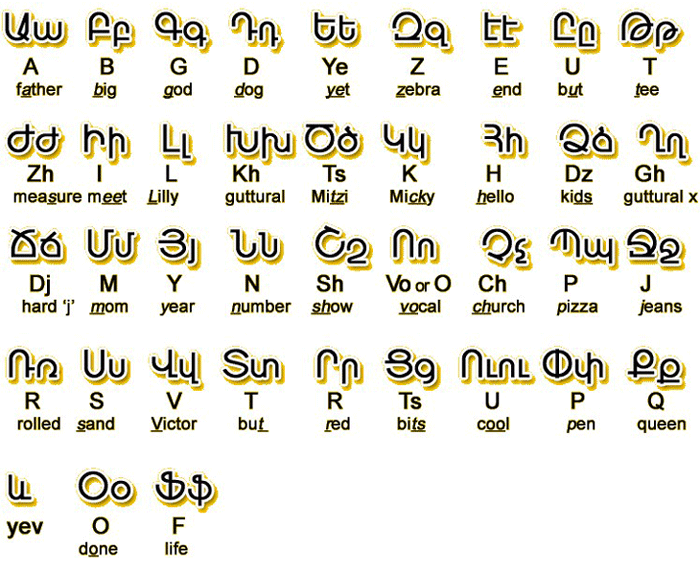
The Armenian alphabet is one of the oldest alphabets still in use today. It was invented in 405 by an Armenian monk, Mesrop Machtots.
Like many other alphabets it is written from left to right. It has 38 letters: 32 consonants and 6 vowels. For the record, the Bible was the first written text translated into Armenian, so this translation is probably very close to perfection.
It is a very precise alphabet phonetically: each letter has a unique use and all the vowels are written down. It admits upper and lower case letters and derives from the Greek alphabet in terms of its structure, but has a very different design closer to Persian characters.
Armenian is a very ancient language, but it is still very much alive and spoken today by at least 6 million speakers.
11 The Avestic Alphabet
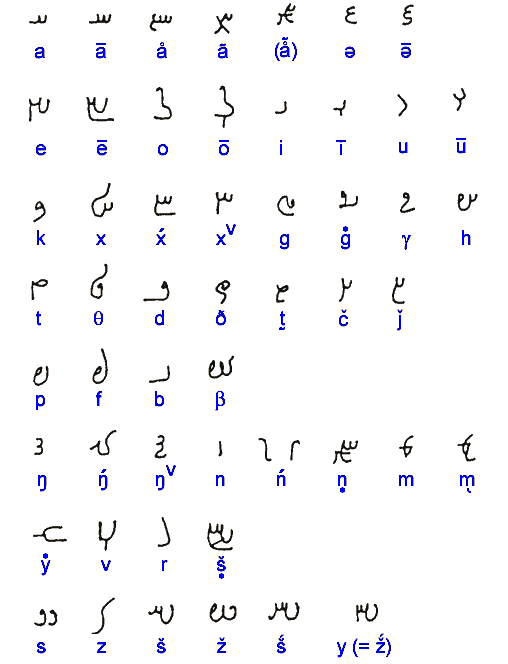
Not many people know the Avestic alphabet. And with good reason. Formerly called zend, the avestic alphabet was once used in the Iranian world as the basis for the avestic language, the language in which the religious texts of Persia were written. It was used from the second millennium BC until the 7th century AD in its most recent version.
It is a very rigorous alphabet that was written with cuneiform characters and was written from right to left. It had a very large number of vowels: 13 in total.
The avestic alphabet disappeared in the 7th century, when Persia converted to Islam, to be replaced by the Arabic alphabet.
12 The Braille Alphabet
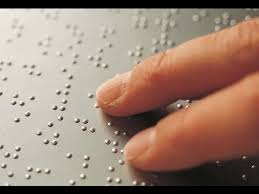
It’s a writing method invented for blind people. It is presented in relief, with raised dots, whose touch with the fingers makes it possible to guess the letters. It was Louis Braille, who himself became blind at the age of 3, who invented this alphabet in 1825 at the age of 16.
This alphabet transcribes sounds thanks to a grid of 6 points positioned in different ways, in relief. This system makes it possible to represent 63 characters and even to code different languages, including mathematics and music.
13 The Carian alphabet
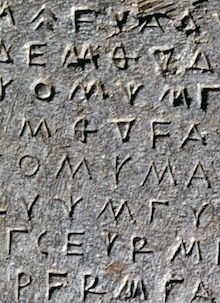
In reality we know very little about the Carian alphabet and its language. Carian, which was an Indo-European language, was used in the 1st millennium BC in Anatolia. Today we have very few documents that allow us to know it well, which makes it one of the languages that gives scientists the most difficulties, especially since it has some rather paradoxical characteristics.
Here is what we know:
– The Carian alphabet has many similarities with the Greek alphabet, but strangely enough, the Greek symbols used are linked to completely different phonetic values. A real paradox!
– The Carian script can be read from right to left, as well as from left to right.
– The Carian alphabet is said to have about thirty signs.
– It would be a mixed system that is both syllabic and alphabetic.
– It is a writing system that does not separate words.
Mysterious alphabet … isn’t it?
14 The Coptic alphabet

The Coptic language is the successor of the hieroglyphic script and it was used mainly to write Christian texts. Its alphabet is very close to the Greek alphabet, but has 7 letters in addition to the 24 in Greek. These 7 signs come from demotic, a writing of hieroglyphic origin.
Coptic differs from Greek in terms of phonemes. It is also interesting to know that the letters of the Coptic alphabet can also be used as numbers.
15 The Cyrillic alphabet
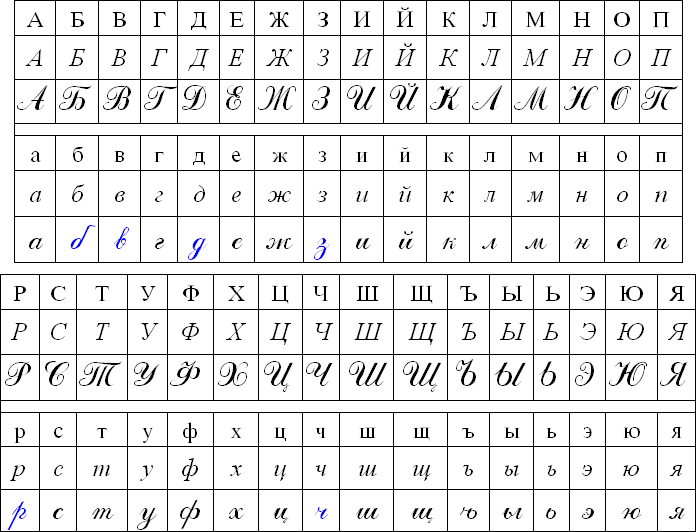
The Cyrillic alphabet makes it possible to note several Slavic languages such as Russian, Serbian, Bulgarian, Ukrainian and even Indo-Iranian, Turkish or Mongolian languages. This alphabet was born in Bulgaria, around the end of the 4th century. It is an alphabet that is composed of 30 letters. It is to two brothers, Saint Cyril and Saint Methodius that we owe the existence of the Cyrillic alphabet. Indeed, having gone to evangelize the peoples of Eastern Europe, the two brothers saw fit to create the Slavonic alphabet (at the base of the Cyrillic alphabet) in order to convey their religion and to make themselves understood more quickly.
It is an alphabet with upper and lower case letters and has a few variations depending on the languages that use it. For example, the Serbian Cyrillic alphabet has 30 letters; the Bulgarian Cyrillic alphabet also has 30 letters. As for the Ukrainian Cyrillic alphabet, like the contemporary Russian alphabet, it has 33 letters.
16 The Egyptian Alphabet
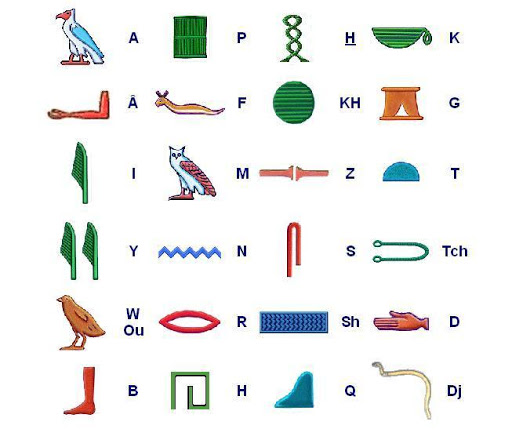
The Egyptian alphabet is one of the most original and ancient alphabets. Here’s a quick overview…
This scripture was born at the end of the 4th millennium BC. It was then used for more than 3000 years, before being lost around the 4th century. It is an alphabet that uses symbolic representations from ancient Egypt as letters. Thus, human figures, drawings of animals, images of plants or gods, etc., these are the types of characters used in Egyptian writing.
The hieroglyphic writing has 24 signs and functions mainly according to the principle of rebus!
Thus, there are three types of signs:
– Ideograms: these are “sign-words” associated with objects or actions.
– Phonograms: these are phonetic signs to indicate consonants.
– Determinatives: these are silent signs that serve to facilitate reading by indicating the lexical field of the word in question. In Egyptian writing, a single character can therefore have several meanings.
17 The Georgian Alphabet

Georgian is an original language that cannot be attached to any major language group. Its alphabet was invented by the first king of the country in the 3rd century. It consists of 33 letters including 28 consonants and 5 vowels. It is a beautiful alphabet to look at with a lot of very rounded shapes. All the letters are pronounced.
18 The Glagolitic Alphabet
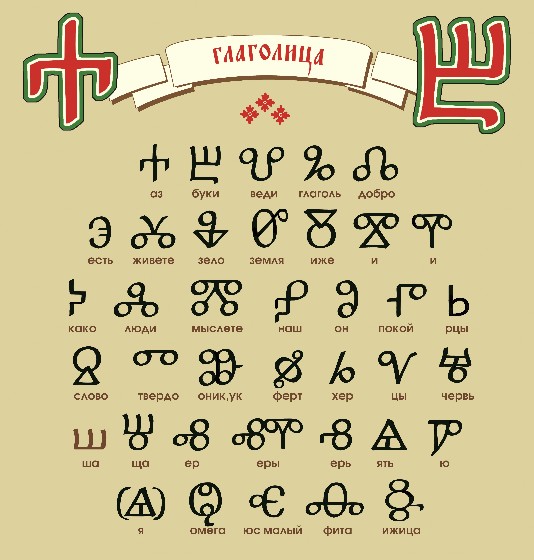
It’s the ancestor of the Cyrillic alphabet! It is an alphabet that was invented in the 9th century by two brothers, Cyril and Methodius, whose mission was to evangelize the Slavic people in the Balkans. In order to do this, they had to transcribe the old Slavic and for this they needed to create a new, more suitable alphabet. It was the cursive Greek that served as the basis for the birth of the Glagolitic alphabet.
With the new alphabet, Cyril practically created a new language. For the translation of liturgical texts required the invention of a number of abstract concepts, expressions and syntactic expressions that did not exist in the Bulgarian dialect that served as his basis. This new written language is called Church Slavon (Церковнославянский).
After the death of the two brothers, the pope decided to ban Slavon, but the work of Cyril and Methodius was continued by their followers who, over time, modified the appearance of the letters of the original Byzantine Greek script and baptised the new version with the name of its creator: Cyrillic alphabet.
19 The Gothic alphabet
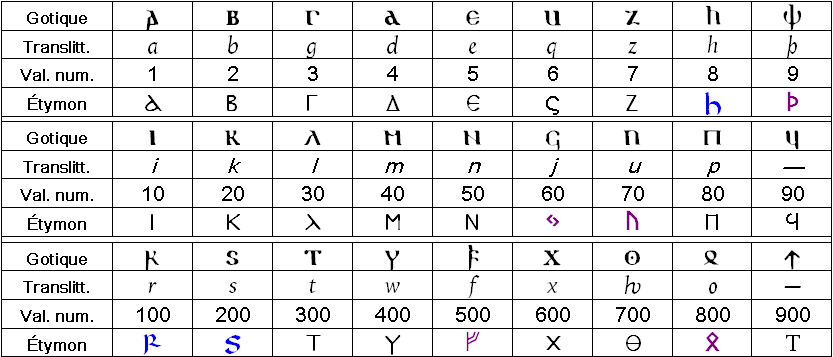
The Gothic alphabet is an alphabet that should not be confused with “Gothic writing”. This alphabet is used to transcribe the Gothic language, a Germanic language spoken in the Middle Ages by the Goth (including the Ostrogoths in the East and the Visigoths in the West). It was not really used until the 4th century. The Gothic no longer exists today but it is nevertheless interesting to study because it is the oldest attested Germanic language.
In the Gothic alphabet there is no difference between upper and lower case letters and the letters also have a numeral value. It is derived from the Greek uncial but does not only contain Greek characters. It also has some Latin characters and 5 characters in Germanic runes.
20 The Greek alphabet
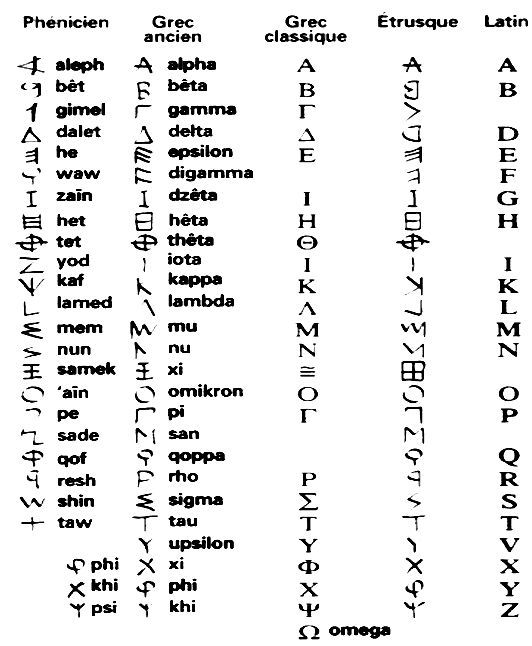
It’s an alphabet that predates the Latin and Cyrillic alphabets. The Greek alphabet was originally used to write several languages. Today, it is mainly used only for Ancient Greek and Modern Greek. Born in the 8th century, the Greek alphabet was modelled on the Phoenician alphabet. Also, compared to the Semitic language that is Phoenician, the Greek alphabet had the particularity of noting vowels. This alphabet is thus made up of 17 consonants and 7 vowels, which makes 24 letters in all, including the famous alphas, beta and gamma which are the first three letters.
Thus, as you can guess, in ancient times the Greek alphabet was also used to note numbers. Some of these characters are therefore regularly used in mathematics or physics; this is the case of the letter π (“pi”) for example. The popularity of the letters of the Greek alphabet does not stop there, however. Indeed, the letters of this alphabet are used in a variety of other ways, such as for naming stars, fraternities or sounds.
The Greek alphabet has a very important historical character because it is the first alphabet to have been used to write an Indo-European league.
It has evolved a lot over time. Thus, certain letters have nowadays disappeared while the system of upper- and lowercase letters has imposed itself. Similarly, Greek is now written from left to right, whereas originally it alternately changed direction, line after line.
21 The Guèze alphabet
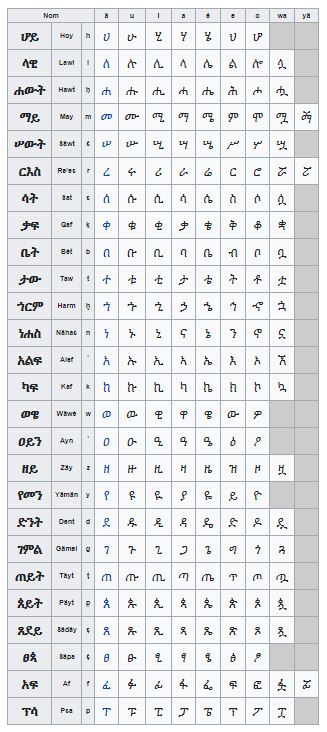
The Gueze occupied an important place in Ethiopia and Eritrea. It was a South-Semitic language whose alphabet was born in the 5th century B.C. and is no longer spoken today. However, the written language has been preserved for all liturgical texts. Its alphabet still persists today and is used to transcribe other Semitic languages.
Originally, the Gueze was an alphabet that only recorded consonants, 26 in all. Then it evolved into an alphasyllabic alphabet that now has 35 consonant signs plus syllables. That is to say that it notes both consonants, but also syllables including these consonants with their vowel indicated in small dashes.
Thus, since with 1 consonant, it is possible to combine 7 vowels, the Guèze writing can count between 182 and 245 characters depending on the language.
Moreover, if originally the Guèze writing alternately went from right to left and then from left to right, now it is only written from right to left.
22 The Hebrew Alphabet
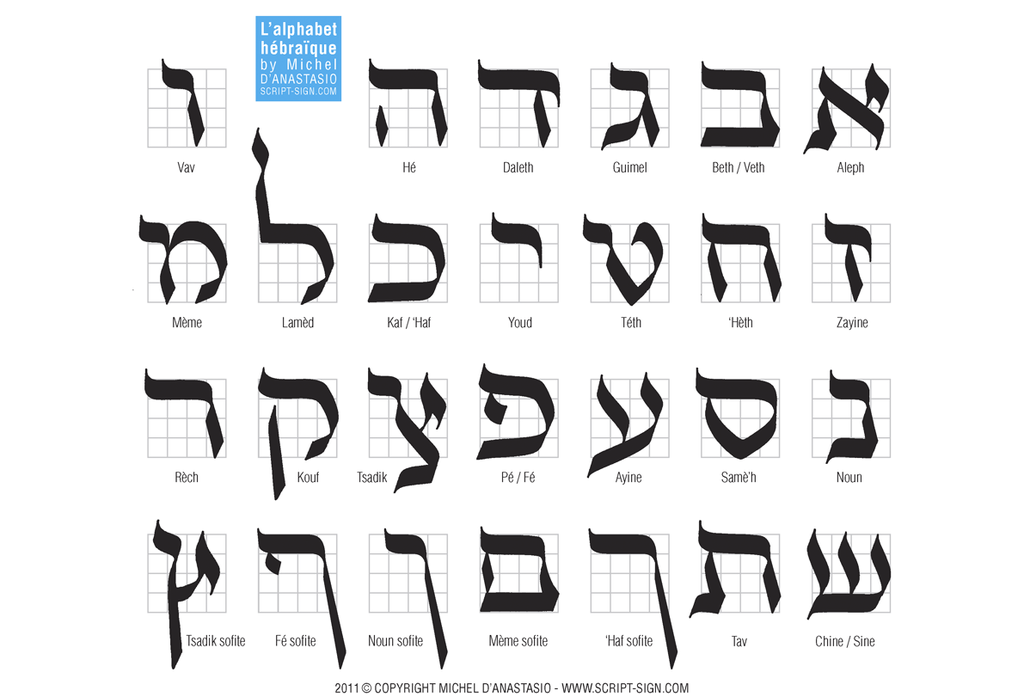
The Hebrew or Hebrew alphabet is an alphabet very close to the Phoenician script. This alphabet was adopted by the Hebrews around 200 BC. Over time, the style of the Hebrew alphabet became closer to that of the Aramaic alphabet. The Hebrew alphabet is also known as the square alphabet or square Hebrew. Around 535, the Hebrew script had indeed begun to take such forms. Note also that the Hebrew alphabet is also the Jewish alphabet. Widely used today, the Hebrew alphabet is mainly used in religious education.
It is a consonant alphabet. In addition, the Hebrew alphabet is a 23-letter alphabet with lines running from top to bottom and characters from right to left. It has letters with numerical values and 5 of them have a final form when used at the end of words.
23 The Japanese alphabet
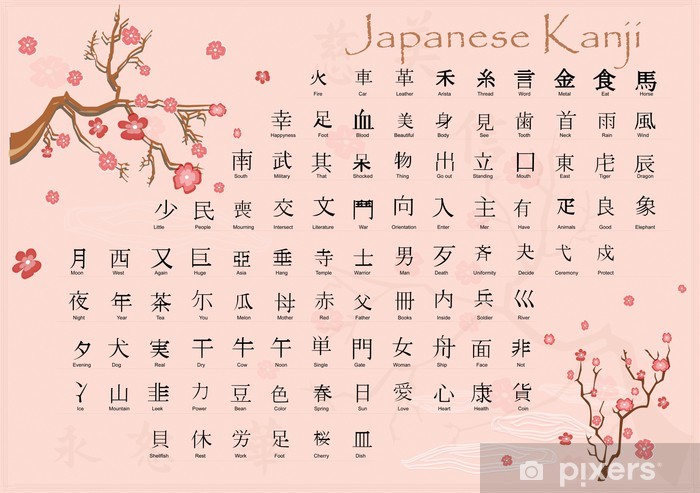
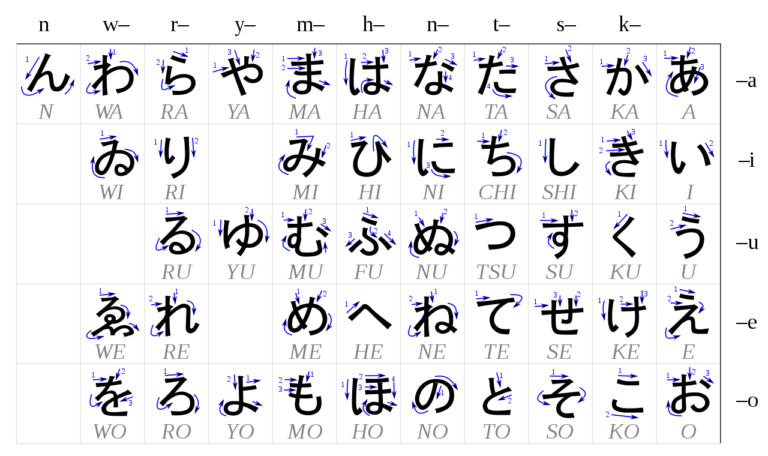
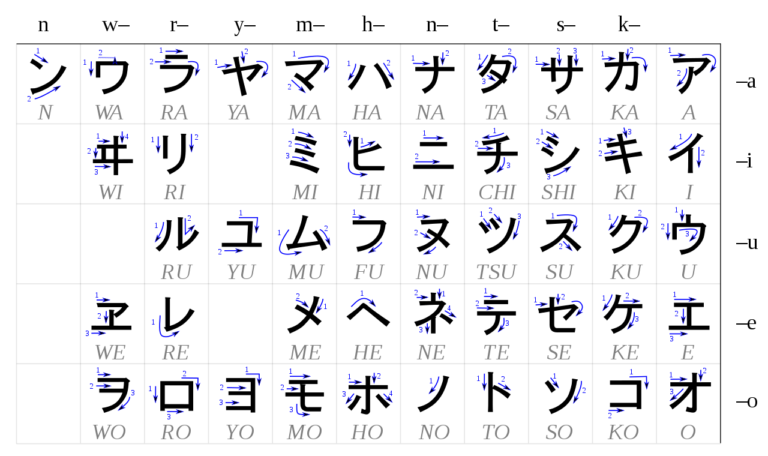
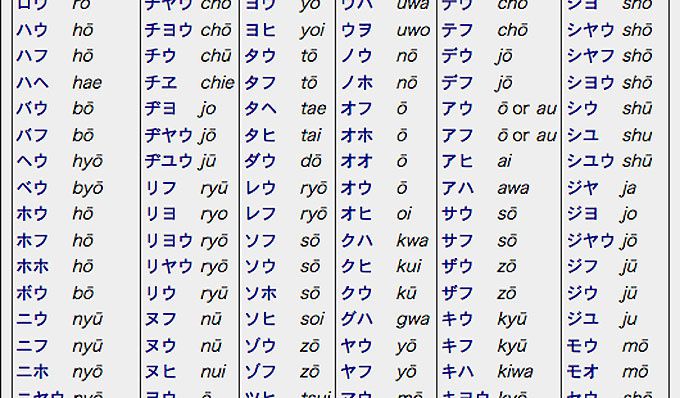
Before the 5th century, characters imported from China were used in Japan. Probably because of incompatibilities between this script and the Japanese language, the Japanese felt the need to create their own script.
It is a writing that has 4 types of spellings:
- Kanji” logograms: these are adaptations of Chinese characters that can be used to write all Japanese words. They are at least 1945 and can be combined with each other.
- The syllabary “kana” hiragana: like the katakana, it has an essentially phonetic value and counts 46 sounds. It is very simple and is used for instruction in primary school. Hiragana is also used to write words for which there is no phonetic transcription in kanji.
- The “kana” katakana syllabary: this Japanese writing system is mainly used to write words of foreign origin, as well as the names of cities and countries.
- The romaji: uses the characters of the Latin alphabet and is used in different ways. For example, it can help tourists find their way around once they get to Japan and has a chic aura, so it is increasingly used in tourist sites.
24 The Latin alphabet
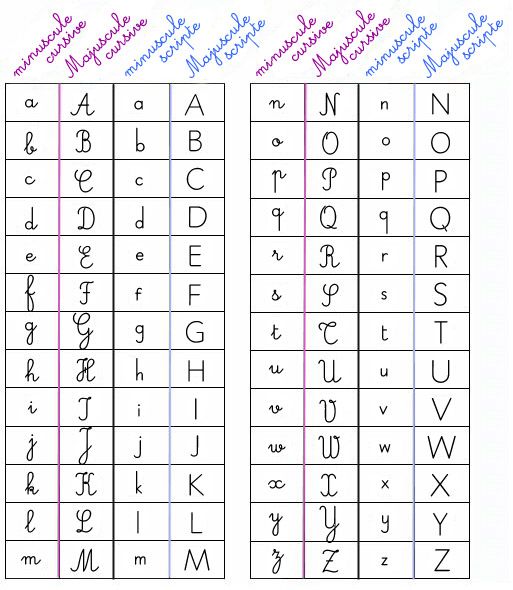
The Latin alphabet, or Roman alphabet, is an alphabet that originated in Italy around the 6th century BC. In the Western world, this alphabet shares most of the writing system with the Cyrillic alphabet. More than 39% of people in the world use it. The Latin alphabet is derived from the Etruscan alphabet, an alphabet that was inspired by the Greek alphabet. Originally, the Latin alphabet was mainly used to transcribe Latin. It is also an alphabet that is written from left to right and has both upper and lower case letters.
Originally it had only 20 letters ( A, B, C, D, E, F, G, H, I, L, M, N, O, P, Q, R, S, T, V, X) and 6 more letters were added later.
The Latin alphabet being used to write many languages, there are logically also many variants according to each language: additional letters, diacritical signs, etc … Thus in the particular letters we find the ç in French, the ñ in Spanish, the ß in German, the ŀl in Catalan, the ð, æ and þ in Icelandic.
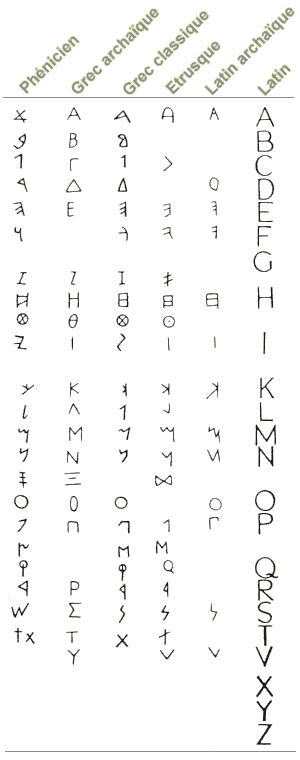
25 The linear alphabet
This very ancient alphabet is said to have been born between the years 2000 and 1300 B.C. It then existed until about 1050 B.C. It is an alphabet derived from the Egyptian hieroglyphics which is composed of 23 distinct signs. The archaeological site Serābiṭ al-Khādim in the Sinai Peninsula has provided good information about this alphabet: the consonant sounds were isolated and each of these sounds was represented by objects whose names began with that sound.
As the first alphabet, the linear alphabet gave rise to other alphabets, including the Phoenician alphabet, which is the ancestor of many other alphabets. The linear alphabet was thus transmitted from deformation to deformation. For example, after having inspired the Phoenician alphabet, this alphabet was passed on to the Greek alphabet, which in turn passed it on to the Etruscan alphabet, which in turn passed it on to the Roman letters and so on…
The Latin alphabet we use today is therefore only an indirect derivative of the linear alphabet.
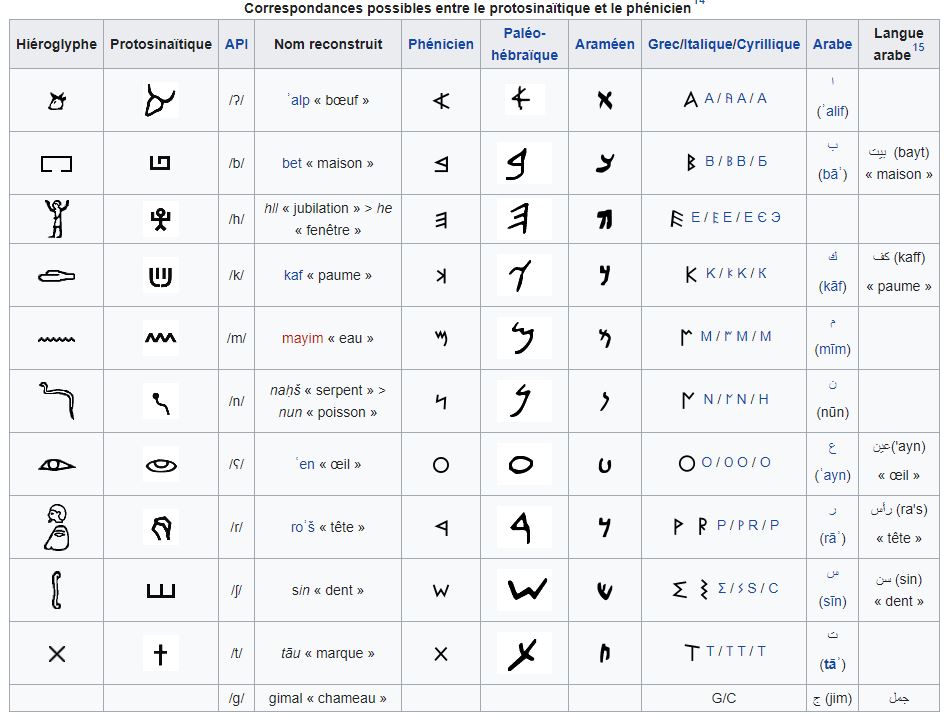
26 The Mandean alphabet
The Mandean alphabet is very similar to the Arabic alphabet, with the first 22 letters coming from the Aramaic alphabet, but it has its own particularities. It is written from right to left and is used to transcribe the Mandean, spoken in southern Mesopotamia. The Mandeans are also a people who attribute magical properties to the letters of their alphabet. Moreover, if the Mandean alphabet has 24 letters it is not by chance. This number is indeed synonymous with luck for the Mandeans.
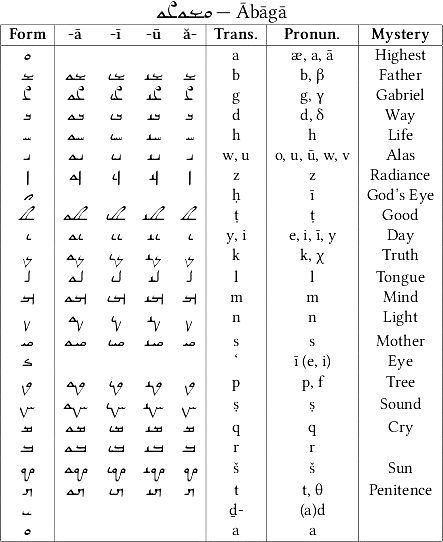
27 The Morse code
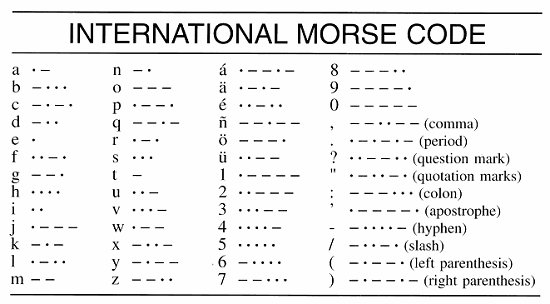
It is a code that was invented by the American Samuel Morse in 1832. It allows a text to be transmitted using short or long impulses either by gestures, light signals or sound signals.
The characters of the Morse code are lines and dots. The unique combination of these signs makes it possible to represent letters as well as numbers and even punctuation marks.
The following rules can be used:
- A line is 3 points long.
- Characters are often separated by a space or slash.
- There are 2 spacing durations.
- Short sequences are used for frequent letters. This is the case of the “e” which is represented by a dot.
- Letters other than the “e” are coded with a maximum of 4 signals; numbers are coded with a maximum of 5 signals.
- Less frequent characters (symbols, punctuation marks, etc.) are coded by long sequences.
- A decoding tree is sometimes used to facilitate the deciphering of Morse code.
28 The Russian Alphabet
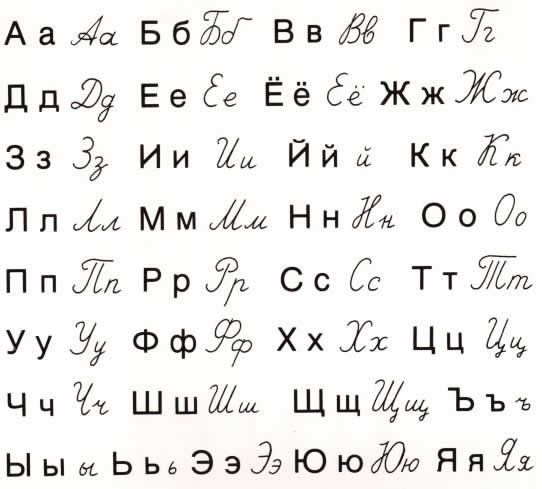
The Russian alphabet is a variant of the Cyrillic alphabet.
Its main characteristics:
- Composed of 33 letters
- Composed of 10 vowels
- Composed of 20 consonants
- Composed of 2 letters that have no sound: a soft sign and a hard sign.
- Can be written in script (printed version) or in cursive (handwriting)
The main difficulty of this alphabet is phonetics, but once this small obstacle is overcome the Russian language is quite easy to learn in the sense that its spelling is simplified, the conjugation is quite simple (there are two forms of time, present and past, and four modes, indicative, imperative, gerund and participle), and there are no definite or indefinite articles.
29 The Khmer alphabet
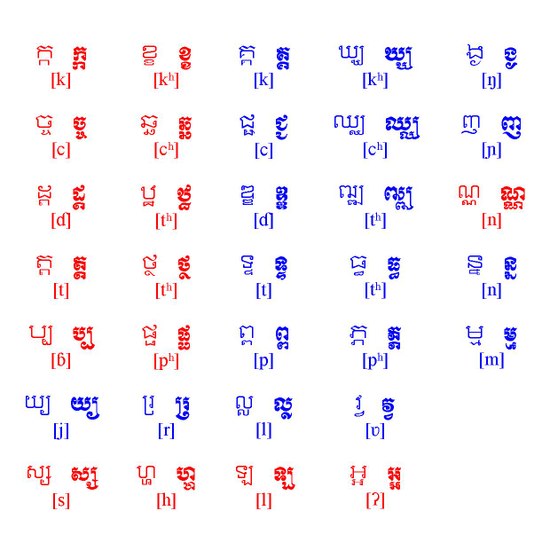
Khmer is the official language of Cambodia and is transcribed by an alphasyllabic of the same name, of which the oldest traces come from the south of India, around 611 BC. Today it has 33 consonants and 24 vowels, but it is not strictly speaking an alphabet.
In writing, there are vowels called “dependent” vowels which must always go together with a consonant. In oral language, on the other hand, the language uses many more vowels than the existing written characters. To counter this, there are two series (or registers) of sounds. These series can be “light” or “heavy”. A vowel can therefore produce different sounds depending on the register to which it belongs.
Khmer script is a script that is written from left to right. However, vowels can be placed either to the left or to the right, or at the top or bottom of the consonant with which they are associated. Also, in this script, words are not often separated and there is no distinction between upper and lower case letters.
30 The Nubian alphabet
Ancient Nubian, the ancestor of the Nubian languages we know today, is the second oldest sub-Saharan language. It is now extinct but gave rise to the appearance of its writing between the 8th and 15th centuries, which had only three letters of its own. The other letters came from the Greek oncial and the Coptic alphabet.
In fact, there are very few writings concerning ancient Nubian: barely a hundred texts, mainly Christian. It is known that there are cases where a line was drawn at the top of each letter, that there were diphthongs and double consonants and that the tones were not marked.
There were also no articles or genres, and the punctuation system was of three types:
– High dots
– Bars
– Double bars
Here is a page from the Ancient Nubian translation of the Liber Institutionis Michaelis Archangelis between the 9th and 10th centuries, found at Qasr Ibrim.
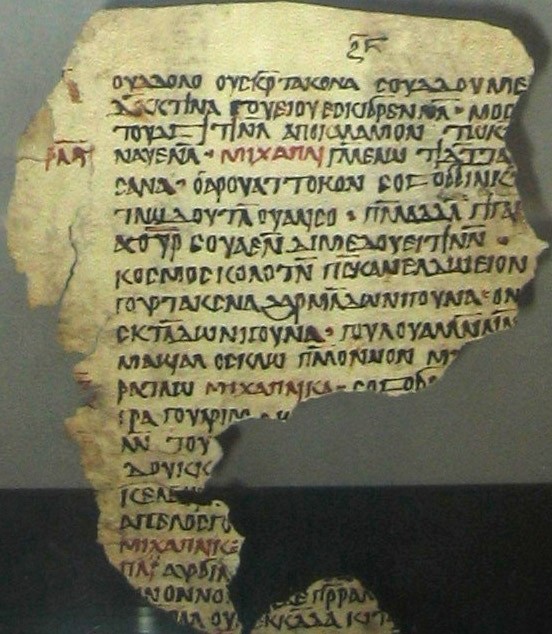
31 The alphabet of the Orkhon
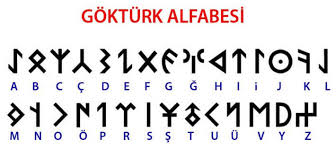
It is the first alphabet used by the Turks as early as the 6th century. The oldest known traces have been found in Mongolia in the Orkhon Valley, about a hundred inscriptions on obelisks dating from between 732 and 735 that told the story of the Turks in its origins and golden age. It consists of 38 letters: 34 symbols are used to note 21 consonants and 4 symbols are used to note 9 vowels.
It should be noted that in the Orkhon alphabet the straight lines are predominant, which is logical if we consider that it was a script usually written in hard surfaces such as stone or wood making it difficult to use curves. It can be read from right to left, but sometimes some inscriptions can be written with a 90° rotation and read from bottom to top.
32 The Nabataean alphabet

The Nabataean alphabet is a descendant of the Aramaic alphabet. It is an abjad type alphabet which means that the use of consonants is predominant. The Nabataean script was also a formal cursive script. The oldest of the inscriptions in this language was found in Petra in the 1st century BC and the most recent inscriptions, dating from 355 AD, have been found in Algeria.
It is an alphabet of 22 letters, 18 of which serve only as consonants. The 4 others are used sometimes as consonants, sometimes as vowels, in order to facilitate reading. It is read from right to left and is written differently according to the place of the letters in the word: middle letters or final letters. In this alphabet there are also 2 types of vowels: short and long. Only the long vowels are noted in the Nabataean script.
As the Nabataean script developed, it introduced more and more Arabic grammatical notions and constructions. Eventually, it was replaced by the Nabataean alphabet, as can be seen in the similarities between the alphabets.
33 The Ugaritic alphabet
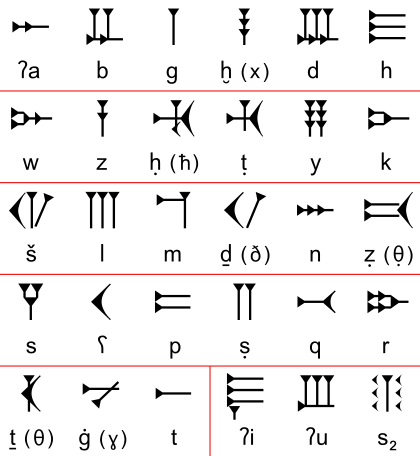
The Ugaric alphabet is one of the oldest and most historical alphabets in existence: it is believed to have existed around 1500 B.C. It originated in Ugarit, a city on the Syrian coast that was very much focused on trade. It is there that interesting text tablets were discovered, representing the local language and in a cuneiform form unknown until then.
Ugaric literature has left traces on various tablets on which it can be seen that the Ugarit peoples were greatly interested in mythology as well as religious rituals. Traces of royal correspondence, letters and legal and administrative documents have also been found. In addition, remains of poetic works were also found in Ugarit; these only confirmed the poetic style that was already evident in the explanation of the mythological texts left by this people.
The Ugaritic script constitutes the first known complete abjad. It therefore essentially notes consonants. However, in the Ugaric alphabet, the letters did not begin with the letter “a” but rather with another letter called the glottis stroke. In addition, this writing also had syllabic graphemes. It is also worth knowing that the ougaritic script is composed of 30 signs; words in this script generally did not exceed 4 signs. In addition, there was a vertical separator which allowed to isolate these words between them. With its decline, the ougaritic writing gave way to the Phoenician writing which became the ancestor of many alphabets such as the Latin alphabet that we use today.
34 The International Phonetic alphabet
Also called API, this alphabet is designed to transcribe all the sounds of all the languages of the world. To do this, each sound of each language is coded by a character of its own and the words of all languages can be transcribed sound by sound into this phonetic alphabet.
This alphabet was created by French and British language teachers in 1888. It contains 107 letters including 52 diacritical signs and 4 prosody characters. The phonetic transcription of the words of the different languages is always written in square brackets.
The International Phonetic Alphabet is often used in bilingual dictionaries to enable the sounds of the word to be read, even if one cannot yet read the language being learned well, for example when it is written in an alphabet other than one’s mother tongue.
Here is an example of reading the international phonetic alphabet for the French language:
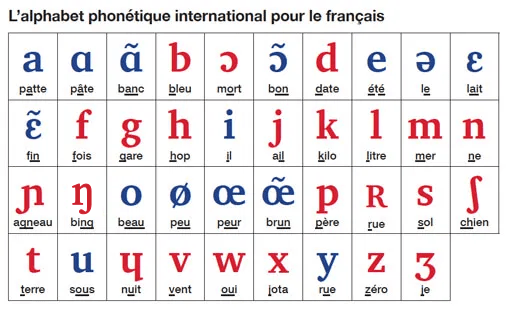
If, for example, we want to read the word “спасибо” in Russian without knowing the Cyrillic alphabet, we can refer to the API which transcribes this word into [spasibo] which means “thank you”.
35 The Phoenician alphabet
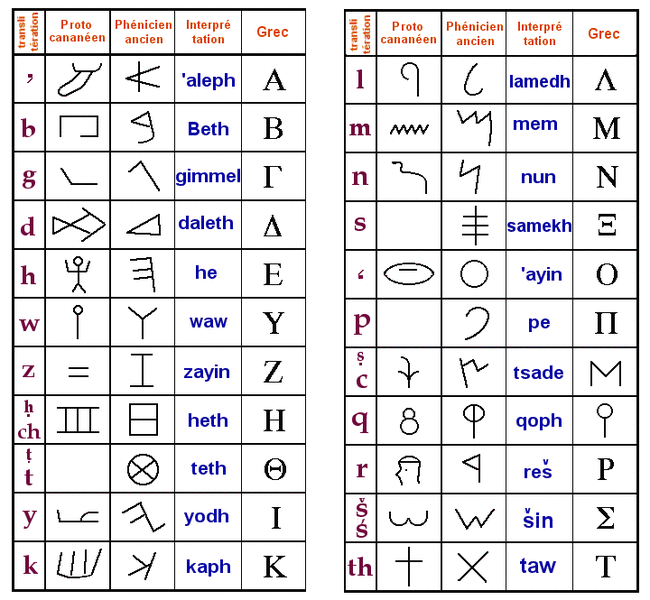
The Phoenician alphabet marked a real historical turning point in antiquity. It is one of the oldest alphabets dating back to 1050 BC, deriving from the earliest traces of alphabetic writing: the Proto-Sinaitic and Protomanean inscriptions. These are the inscriptions that for the first time established the principle of the alphabet and therefore the principle of an alphabetical order of letters. It was a great success thanks to the simplicity of its phonetics. Indeed, compared to the pre-existing scripts (hieroglyphics, cuneiform writing) the Phoenician script had the great advantage of representing each sound by a single sign: it was therefore very easy to learn. In addition, due to the commercial and maritime culture of the Phoenicians, the alphabet spread far and wide throughout the world, which greatly contributed to its great notoriety.
The Phoenician alphabet consists of 22 letters. It is an abjad, meaning that it codes only consonants. The Phoenician script was written from right to left. The Phoenician alphabet inspired many alphabets such as Greek, then Cyrillic, Etruscan and Latin. It also gave birth to the Hebrew, Aramaic and Arabic alphabets.
36 The runic alphabet
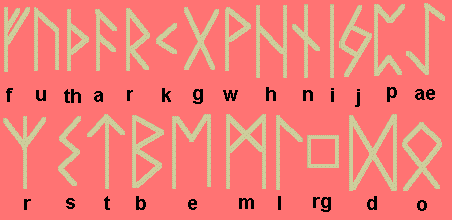
Around the 2nd century, there was an alphabet that was used by the Germanic-speaking peoples: the Goths, Scandinavians, Friesians and Anglo-Saxons. This alphabet was the runic alphabet which was still called futhark.
Associated at the time with magic, esotericism, occultism and divination, the runes are still considered as such today. Their characteristics could be automatically guessed in their name since the term rún means “secret”. Moreover, the runes would have come to the mind of the god Odin after the latter remained suspended by the feet 9 days and 9 nights at the sacred tree Yggdrasil. Therefore, the simple act of engraving the runes was already a magical act in itself. However, the origin of the runes is not really known. Some people linked them to the Etruscan alphabet, while for others they were more likely to come from the Roman or Greek alphabets.
Over time, the runic alphabet evolved differently according to the peoples who used it: among the Scandinavians, thousands of runic inscriptions have been found, whereas among the Anglo-Saxons, only about fifty have been found.
The runes were engraved on various materials such as metal, stone, and more often wood, which explains why the runic characters were mainly vertical and diagonal: it was necessary to avoid breaking the wood.
Rune writing had its greatest success between the 9th and 11th century. The alphabet initially had 24 characters, organized in 3 groups of 8 runes each, to which the rune WYRD was later added. It was not very practical because several different sounds were associated with the same letter.
Around the year 800, there was then a new version of the futhark which had 16 characters and had more simplified spellings. Afterwards, the Anglo-Saxon futhark grew to about 28 runes.
37 The Persian-Arabic alphabet
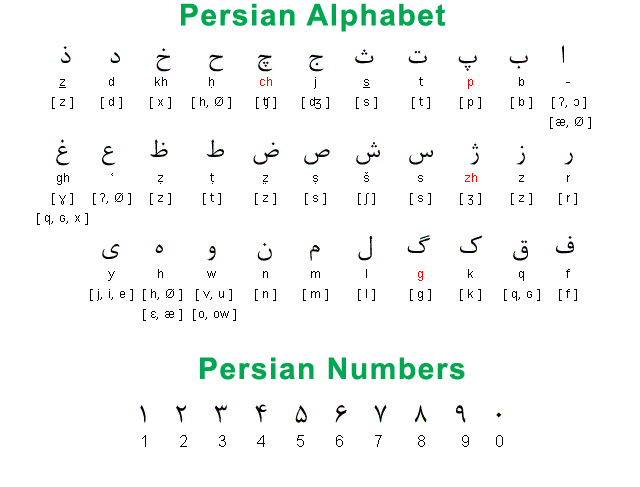
This is the alphabet used to transcribe and read Persian in Iran and Afghanistan. It is a modified version of the Arabic alphabet. It is also useful to know that the Persian language can be written with the Cyrillic alphabet (in Tajikistan) and the Latin alphabet.
Moreover, it was only 150 years after the conquest of the Persian Empire that the Arabic alphabet was adopted by the Persians. Before that, other alphabets were used: the Pehlevi and the Tindapirak, an original Iranian alphabet.
In any case, the Persian-Arabic alphabet is an alphabet that adds 4 letters to the Arabic alphabet. The addition of these 4 letters was a necessity to represent 4 Persian sounds that did not exist in the Arabic alphabet. The letters pe (پ), tche (چ), že (ژ) and gâf (گ) are therefore the letters that were added. As a result, the Persian-Arabic alphabet has 32 main characters.
It is a script which, like Arabic, is written from right to left and only notes consonants, but which integrates a notion of pseudo-space which does not exist in its predecessor.
38 The Syriac alphabet

The Syriac alphabet, born in 200 BC, is derived from the Aramaic alphabet and inspired the Arabic alphabet. It is a consonant alphabet that favours the notation of consonants (abjad). This alphabet was used to transcribe Syriac, a Semitic language, and it was also used to write Aramaic and later Arabic.
It is also an alphabet that comes in 3 types: the estrangelo, the serto almost no longer used nowadays, and the madnhoyo still used for modern Syriac. It notes the vowels thanks to a system of dots at the top and bottom of the letters. This alphabet has 22 letters and contains almost only consonants.
39 Voynich’s handwritten alphabet
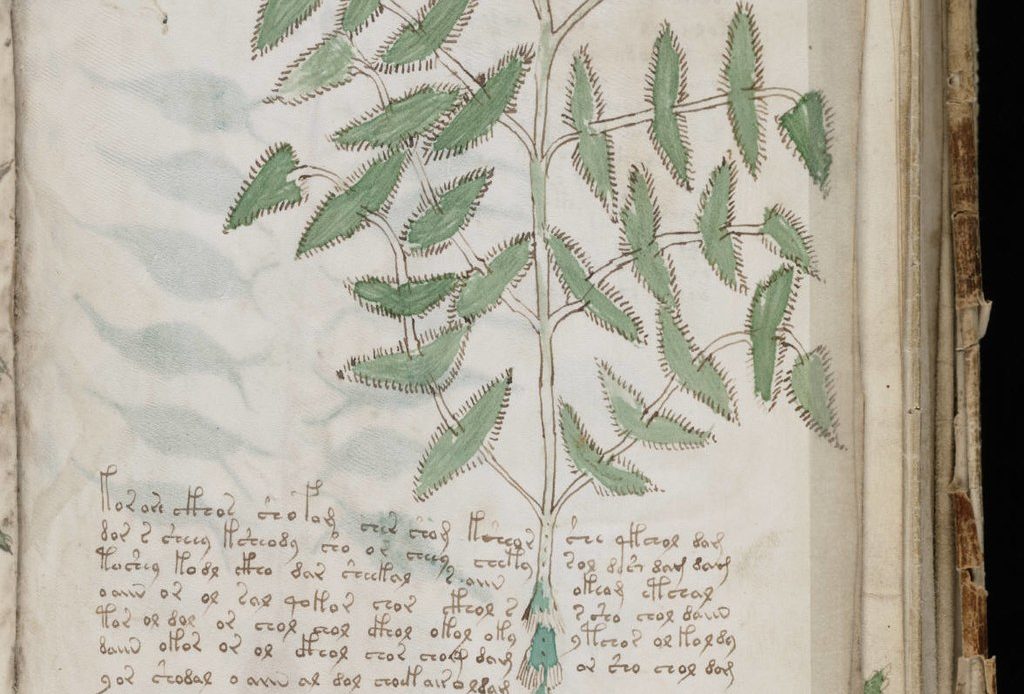
True mystery for cryptology, the manuscript of Voynich is a book that transcribes an alphabet whose origin and language are unknown. This book bears the name Voynich because it is to Wilfrid M. Voynich that we owe its discovery in 1912. The latter would have acquired it near Rome, in a Jesuit community in Frascati. Voynich’s manuscript is a small manuscript 23 cm high and 15 cm wide. It has 234 pages and is currently held at the Beinecke Rare Book and Manuscript Library at Yale University, USA. It has been there since 1969. The manuscript, written with a goose quill, is actually a high quality parchment made from the skin of a very young calf.
Voynich’s manuscript also contains various colorful illustrations including many unknown plants, diagrams of stars, drawings of naked women bathing, etc.. Studies based on carbon-14 dating of the parchment have revealed that this manuscript would have been made in the 15th century, more precisely between 1404 and 1438. Moreover, analyses also show that there are spaces between words and that paragraphs are used when the text is too long. Moreover, there are no punctuation marks in the text. Similarly, a study of the characters in the manuscript of Voynich suggests that it contains between 20 and 30 characters.
If the manuscript of Voynich is so famous today, it is because to this day it remains a real mystery. It has inspired many works of fiction such as the film “Indiana Jones and the Last Crusade” or the book “The Novel of Nostradamus”. Some even wonder if this manuscript might not in fact be a gigantic hoax. In any case, the handwriting on it seems to be expressly written from left to right. It would also seem that the scribe who wrote it understood exactly what he was writing; the letters were indeed very fluid. Moreover, the manuscript seems to be divided into 6 sections (herbarium, astronomy, biology, cosmology, pharmacology, recipes). To this day, its true nature remains unknown. However, according to the illustrations it contains, it seems that once deciphered, Voynich’s manuscript could only reveal interesting things.
40 The tifinagh alphabet
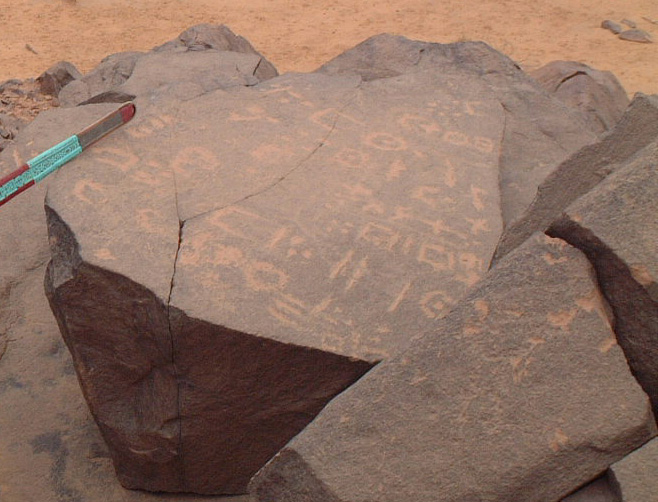
The Tifinagh alphabet is an alphabet born around the 3rd century BC and used to write the Amazigh languages, a family of languages spoken by the Berbers, i.e. between 16 and 30 million people in Morocco, Algeria, Libya, Mali, Niger, …

The tifinagh alphabet was created by Anigouran. Having somewhat disappeared since antiquity, it was reintroduced by Kabyle militants of the Berber academy at the beginning of the 20th century. This alphabet exists in various forms which are: the Libyan, the Saharan tifinagh, the Tuareg tifinagh and the neotifinagh as it exists today in Morocco.
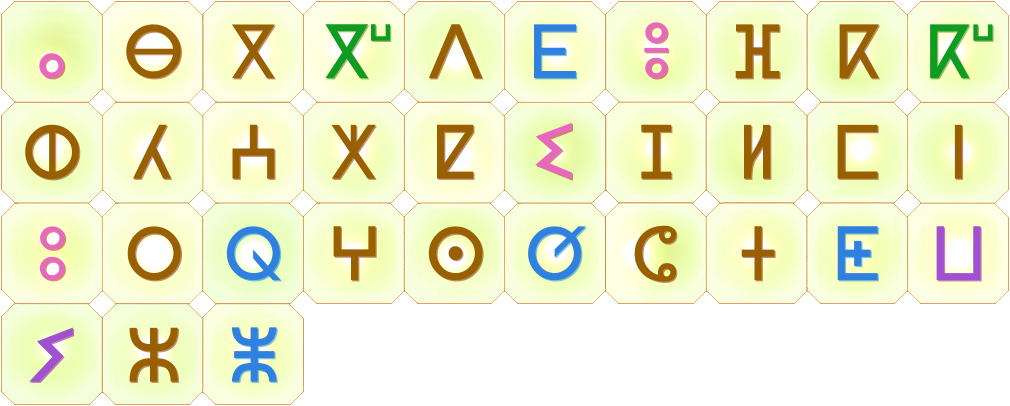
41 The Pehlevi script
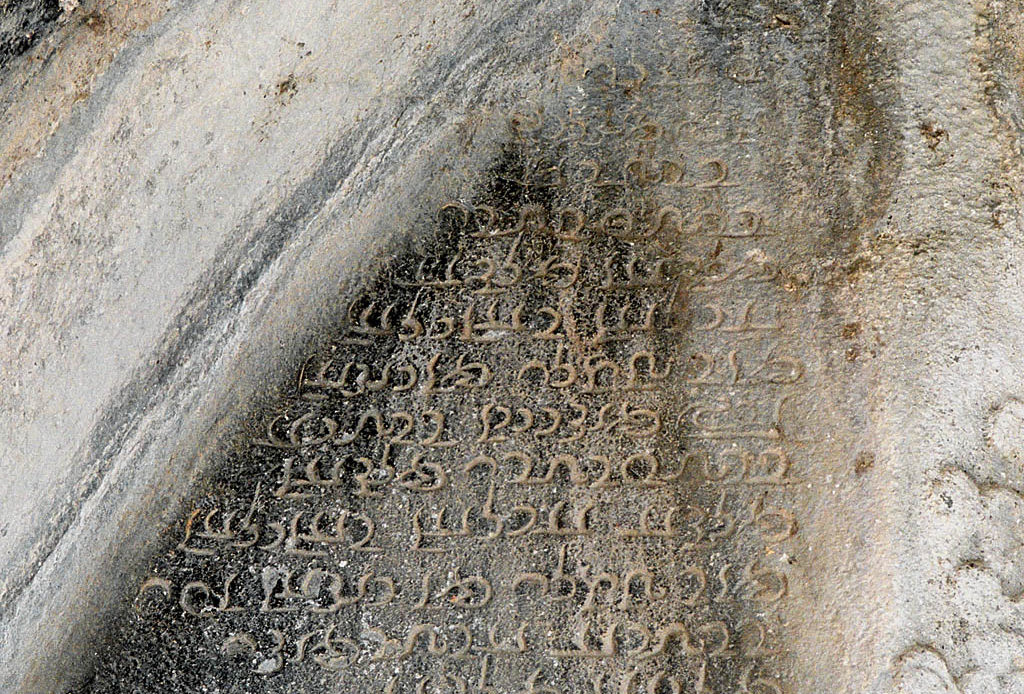
The Pehlevi script is a writing, generalized around 224, which was used to transcribe various languages of the Middle Persian. It is a writing which derives from the Aramaic alphabet. The first known Pehlevi inscriptions were found on graffiti discovered in Persepolis.
There are two types of writings concerning the Pehlevi script.
The first consisted of inscriptions that came mainly from the Sassanid bourgeoisie (emperors, notables, high priests…). The second was written in books.
A little more cursive than the pehlevi of inscriptions, the pehlevi of books contained several complex ligatures.
Moreover, it is worth knowing that the pehlevi was written from right to left. It is a typically abject writing that marks only the long vowels with matres lectionis (reading aids, by the “detour” of a few consonants). It is not a very phonetic writing since it had only 12 characters to write 24 sounds. Pehlevi was a difficult language to read and understand.
42 The Thai alphasyllabary
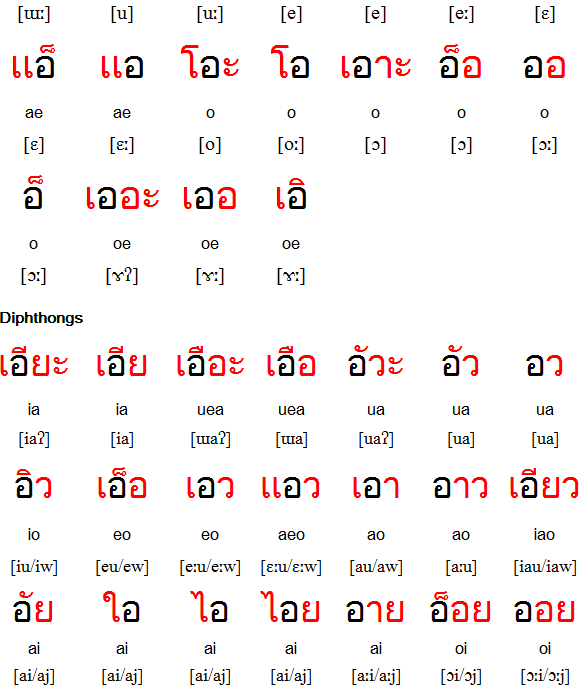
The Thai alphasyllabary is an alphasyllabary that appeared around the 13th century and is still used today. It cannot be said that it is a real alphabet. It has a lot of letters: 44 consonants and 4 consonant-vowel signs combined as well as vowels that refer to many sounds.
In the syllable, vowels can be written both up and down as well as before and after their consonant. Some of them may not even be written at all. These vowels also include diphthongs. Furthermore, Thai script is a script in which diacritics are used. Diacritics are used to correct the tone indications of the consonant classes; they are also used to integrate foreign words that would otherwise be difficult to transcribe. Thai is also an alphasyllabary in which the writing goes from left to right. It has no separation between words.
Sources :
Images : https://www.pinterest.fr/, https://fr.wikipedia.org/wiki/Alphabet_cyrillique#:~:text=serbe%20(voir%20Alphabet%20cyrillique%20serbe,vieux%2Dslave%2C%20langue%20%C3%A9teinte
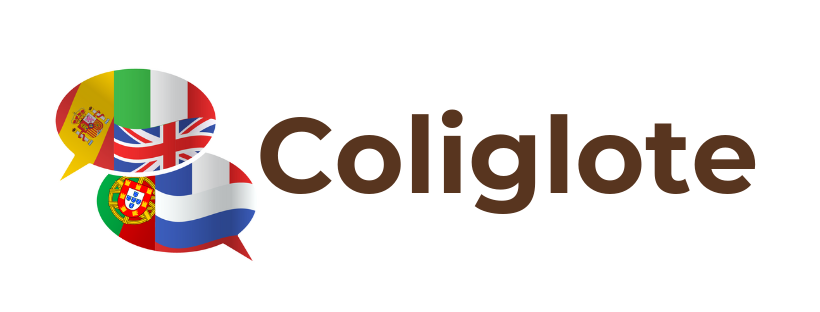
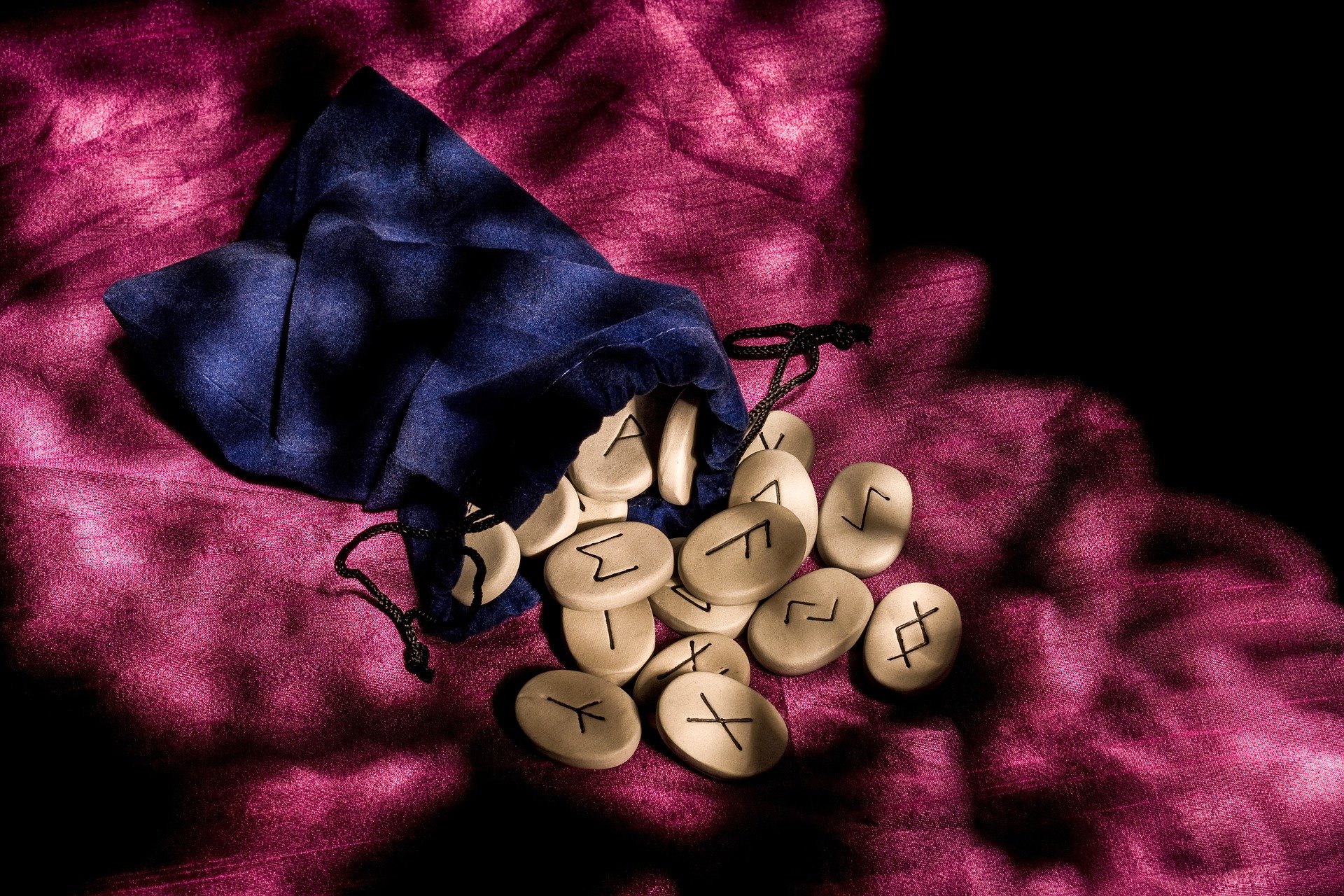
Housna
7 August 2020 at 0 h 14 minMerci beaucoup Ingrid, c’est super magnifique !
Bonne soirée, bisous !
Amir
30 March 2021 at 17 h 37 minMy mother tongue is persian, So I learned Ugaritic, Different types of pahlavies, Avestic, Arabic, Cyrillic and Latin to be able to read all persian texts
Coliglote
31 March 2021 at 12 h 19 minWouahou … bravo !
Cristina
16 July 2021 at 11 h 03 minBonjour,
Un petit ajout à l’article : la langue italienne, bien qu’elle utilise l’alphabet latin ne comporte que 21 caractères. L’alphabet italien standard ne comporte pas les lettres latines K Y J W X. Seuls les mots d’origine étrangère comportent ces lettres. Ex: jeans.
Et, si je ne me trompe pas, l’italien se positionne en deuxième position après l’alphabet Rotokas (12 lettres) comme alphabet avec le moins de signes.
Coliglote
25 July 2021 at 9 h 58 minMerci pour cet apport intéressant !
Eli
14 November 2022 at 8 h 46 minSalut,
Je ne vois pas l’alphabet syllabique des inuits : alphabet d’adoption, issu des transcriptions des religieux qui ont aidé à coloniser la région, si j’ai bien compris.
MERCI
Pendant mes vacances, j’ai décidé de passer du temps sur le coréen car j’aimerais le chanter au karaoke ^^
Pichon
4 December 2022 at 10 h 27 minBonjour, je possède un texte dont je n’arrive pas à trouver l’origine, ni l’alphabet.
Pouvez-vous me contacter par mail afin que je puisse vous envoyer une photo.
Merci.
Coliglote
9 December 2022 at 10 h 49 minBonjour, vous pouvez écrire à contact@coliglote.com. Je serais curieuse de voir à quoi ressemble votre alphabet, mais ne vous garantis pas de trouver la réponse !
Bien cordialement
Ingrid